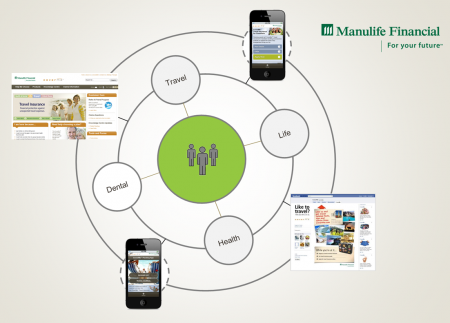 The intersection between digital, social and physical experiences.
The intersection between digital, social and physical experiences.
This past weekend the family and I headed into the city for the annual Toronto Santa Claus parade, which according to the organizers is the largest in North America. As part of the total experience we rode the GO train into the city. The kids loved it!
After a very, very long day we jumped back on the train and headed home. On the ride home I was reflecting on the number of digital touchpoints I had with the GO during this one trip. From its Presto pass (digital payment system) to its mobile app (checking times and the track numbers) to text alerts throughout the day. Public transit still has lots of issues, but I have to admit, GO Transit’s digital ecosystem of services is pretty good. It provides real-time data and it’s personalized.
What is a customer-centric digital ecosystem?
When I think of a branded digital ecosystem, Nike+ is one of the best examples that comes to mind. It’s also one of the most talked about in the media. With its FuelBand, shoe technology, websites and mobile apps all supporting its worldwide online community of more than seven million, it’s a great example of a brand creating digital products and services that support the customer while holding true to its core brand values. Not to mention, many of these digital products and services are not free. Nike’s digital services have become a revenue generation centre for the brand.
It’s mind blowing that in a relatively short time, brands have amassed such complex networks of digital and social media properties. Customers today have a myriad of options when it comes to interacting with brands across channels. However, many of our clients say they are overwhelmed managing these ever expanding digital ecosystems. Not to mention many of their digital properties are under performing and are failing to move the needle on bottom or top line revenue. Brands need to step back and re-think their digital strategies. And they need to stop producing digital shiny objects all in the name of innovation!
Creating a customer-centric digital ecosystem
Much of our work over the past few years has been focused on re-thinking and aligning brands’ digital ecosystems. Manulife Financial’s CoverMe.com brand is a good example. CoverMe consists of a core website to purchase insurance, a mobile app/website to assist the busy traveller, an online product selector, and social media properties; all of which are branded tools and services designed to help Manulife’s customers in their everyday lives and to support the company’s core brand.
Brands need to step back and assess their current digital ecosystem and develop a plan based on reaching real business objectives and aligning with the brand. The work we did for SickKids Foundation earlier this year is an example of a great place to start. We conducted an assessment of the Foundation’s digital properties based on a scoring system we developed. That assessment led to an overall vision and roadmap including a governance plan. You can read the case study here.
What’s the status of your brand’s digital ecosystem?